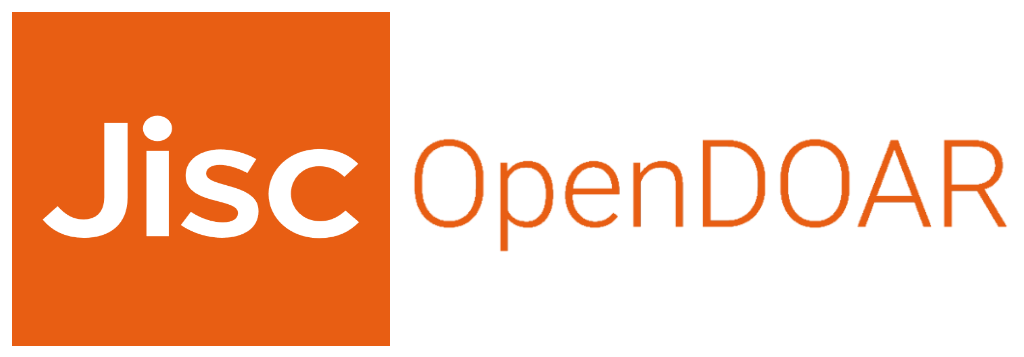| dc.contributor.author | García', Lury Nohemy | |
| dc.contributor.author | Salas, Ana Marcela | |
| dc.date.accessioned | 2021-07-27T15:59:35Z | |
| dc.date.available | 2021-07-27T15:59:35Z | |
| dc.date.issued | 2013 | |
| dc.identifier.issn | 2323-0576 | |
| dc.identifier.uri | https://repositorio.unipacifico.edu.co/handle/unipacifico/672 | |
| dc.description.abstract | El objetivo del trabajo fue evaluar el efecto en el crecimiento de juveniles de tetra emperador (Nematobrycon palmen) alimentados con dos dietas de alimento concentrado, una de tipo hundible y otra flotante; ambas preparadas comercialmente con un nivel proretruco del 38%. El experi mento se desarrolló en el laboratorio de peces ornamentales de la Universidad del Pacífico, sede Buenaventura, valle del Cauca, se seleccionaron 80 peces con peso inicial promedio de 0,27±0,01 g y 2,3±0, 1 cm de longitud total. Estos se asignaron al azar a los dos tratamientos, con 4 réplicas cada uno y densidad de 10 peces por acuario. Un grupo fue alimentado con alimento concentrado en forma de hojuelas y que flotaba en la superficie del agua, y un segundo grupo con alimento concentrado y peletizado, que se hundía inmediatamente en el agua. Se utilizaron ocho acuarios plásticos de 18 litros, equipados con filtro y aireación. El experimento duró ocho semanas, las dietas fueron ofrecidas dos veces al día y se tomaron parámetros de calidad de agua periódica mente. Se hicieron biometrías y realizaron análisis de supervivencia, crecimiento y ganancia de peso. Para comparar las medias de los dos grupos de datos se utilizó la prueba 1-Student con poder estadístico del 95%. Los peces alimentados con el concentrado peletizado obtuvieron un peso final de 0,61±0,39 g, significativamente mayor (P<0,05) comparado con los peces alimentados con hojuelas que alcanzaron un peso final de solo 0,25±0, 11 g. En cuanto a la longitud total no hubo diferencia significativa (P>0,05) entre ambos tratamientos, con tallas de 2,3±0,6 cm y 2,2±0,3 cm, respectivamente. En relación a la supervivencia, todos los peces alimentados con el alimento peleti zado sobrevivieron y mostraron buen estado de salud; pero en aquellos alimentados con hojuelas, algunos murieron (7 de 40 peces). Basado en este estudio y otros resultados previamente publica dos se concluye que un alimento concentrado, que sea peletizado en gránulos y hundible, puede ser considerado como la mejor alternativa de alimentación para juveniles de tetra emperador en proyectos productivos de acuicultura, con el mínimo impacto ambiental. | spa |
| dc.description.abstract | The objective of this study was to evaluate the effect on the growth of juvenile emperor tetra (Nematobrycon palmen) fed a pelleted sinkmq and floatmq flake feed. Both were commercially prepared with a protein level of 38%. The experiment was conducted in the laboratory of ornamental fish of the Universidad del Pacifico, eighty fish were selected with an average initial weight of 0.27±0.01 g and 2.3±0.1 cm total length. These were randomly assigned to !he two treatments, wilh 4 replicates each, and density of 10 fish per aquarium. One group was fed !he floating flake die! and the second group !he pelleted sinking die!. Eight 18-liler plastic tanks were used, each equipped wilh a sponge filler and aeration system. The experiment lasted eight weeks, !he feed was offered twice a day, and water quality parameters were taken periodically. Biometrics were taken and analyses performed to estímate survival, growth, and percent weight gain. The t-student test, with !he signifi cance level p= 0.05, was used to test the hypothesis of significan! differences between average values. Fish fed !he pelleted sinking feed reached a final weight of 0.61±0.39 g, significantly higher (P<0.05) compared to fish fed the flake diet that hada final weight of only 0.25±0.11 g. Total lengths of fish at the end of the experiment did not differ (P>0.05) between !hose fed the pelleted sinking and flake diets, 2.3±0.6 cm and 2.2±0.3 cm, respeclively. AII fish fed the pelleted sinking diet survived and showed good health througout the study. However, sorne fish died (7 of 40 fish), without any apparent disease in the group fed the flake diet. Based on this study and other results previously published, a nutrient dense, pelleted sinking (or slow-sinking) feed may be the bes! alternative for feeding juvenile emperor tetra, and other similar ornamental fish species, in intensive production systems and having a minimal impact on the environmental. | eng |
| dc.format.extent | 6 | spa |
| dc.format.mimetype | application/pdf | spa |
| dc.language.iso | spa | spa |
| dc.publisher | Universidad del Pacífico | spa |
| dc.rights | Derechos reservados - Universidad del Pacifico | spa |
| dc.rights.uri | https://creativecommons.org/licenses/by-nc-sa/4.0/ | spa |
| dc.title | Efecto en el crecimiento de juveniles del Tetra Emperador, Nematobrycon palmeri (Eigenmann, 1911) con dos dietas: Flotante y hundible. | spa |
| dc.type | Artículo de revista | spa |
| dc.coverage.region | Pacifico | |
| dc.description.edition | Edicion N° 1 | spa |
| dc.publisher.place | Buenaventura | spa |
| dc.relation.citationendpage | 45 | spa |
| dc.relation.citationissue | 1 | spa |
| dc.relation.citationstartpage | 40 | spa |
| dc.relation.cites | http://www.unipacifico.edu.co:8095/publicacionesunipa/documentos/SABIAN2.pdf | |
| dc.relation.ispartofjournal | Sabia: Revista científica . No 1 Año 2013 | spa |
| dc.relation.references | AKO, H., NISHIMURA, T., & TAMARU, C. S. (1998). Palatability of flake feeds using the emperor tetra. l'AO Hawaii'I, 1998(5), 1-4. | spa |
| dc.relation.references | CHAPMAN, F. A. (2000). Ornamental fish culture, freshwater. In R. R. Stickney (Ed.), Encyclopedia of Aquaculture (p. 602-610). New York: John Wiley & Sons, lnc. | spa |
| dc.relation.references | CHAPMAN, F. A. (1997). Evaluation of commercially-formulated diets for feeding tiger barb, Puntius tetrazona. Journal of Applied Aquaculture, 7(1 ), 69-74. | spa |
| dc.relation.references | GOLDBLATT, M. J., CONKLIN, D. E., & BROWN, W. D. (1979). Nutrient leaching from pelleted rations. In J. E. Halver & K. Tiews (Eds.), Finfish Nutrition and Fishfeed Technology (p. 117-129). Berlín: Heenemann Verlagsgesellschaft. | spa |
| dc.relation.references | HARPAZ, S., SLOSMAN T., & SEGEV, R. (2005). Effect of feeding guppy fish fry (Poecilia reticulata) diets in the form of powder versus flakes. Aquaculture Research, 36(10), 996-1000. | spa |
| dc.relation.references | LANDINES, M., SANABRIA, A., & VICTORIA, P. (2007). Producción de peces ornamentales en Colombia. Bogotá: INCODER & Universidad Nacional de Colombia. | spa |
| dc.relation.references | Legiscomex.com (2013). Estudio de mercado peces ornamentales en Colombia. Accedido el 15 de Octubre, 2014, desde http://www.legiscomex.com/BancoMedios/Documentos%20PDF/estudio%20peces%20ornamental es%20completo3.pdf | spa |
| dc.relation.references | MANCERA-RODRfGUEZ, N. J., & ÁLVAREZ-LEÓN, R. (2008). Comercio de peces ornamentales en Colombia. Acta Biológica Colombiana, 13(1 ). 23-52. | spa |
| dc.rights.accessrights | info:eu-repo/semantics/openAccess | spa |
| dc.rights.creativecommons | Atribución-NoComercial-CompartirIgual 4.0 Internacional (CC BY-NC-SA 4.0) | spa |
| dc.subject.lemb | Dietas artificiales | |
| dc.subject.lemb | Peces ornamentales | |
| dc.subject.lemb | Preferencias de alimentación | |
| dc.subject.lemb | Artificial diets | |
| dc.subject.lemb | Ornamental fish | |
| dc.subject.lemb | Feeding preferences | |
| dc.subject.lemb | Pelleted feeds | |
| dc.type.coar | http://purl.org/coar/resource_type/c_6501 | spa |
| dc.type.coarversion | http://purl.org/coar/version/c_970fb48d4fbd8a85 | spa |
| dc.type.content | Text | spa |
| dc.type.driver | info:eu-repo/semantics/article | spa |
| dc.type.redcol | http://purl.org/redcol/resource_type/GC | spa |
| dc.type.version | info:eu-repo/semantics/publishedVersion | spa |
| dc.rights.coar | http://purl.org/coar/access_right/c_abf2 | spa |










